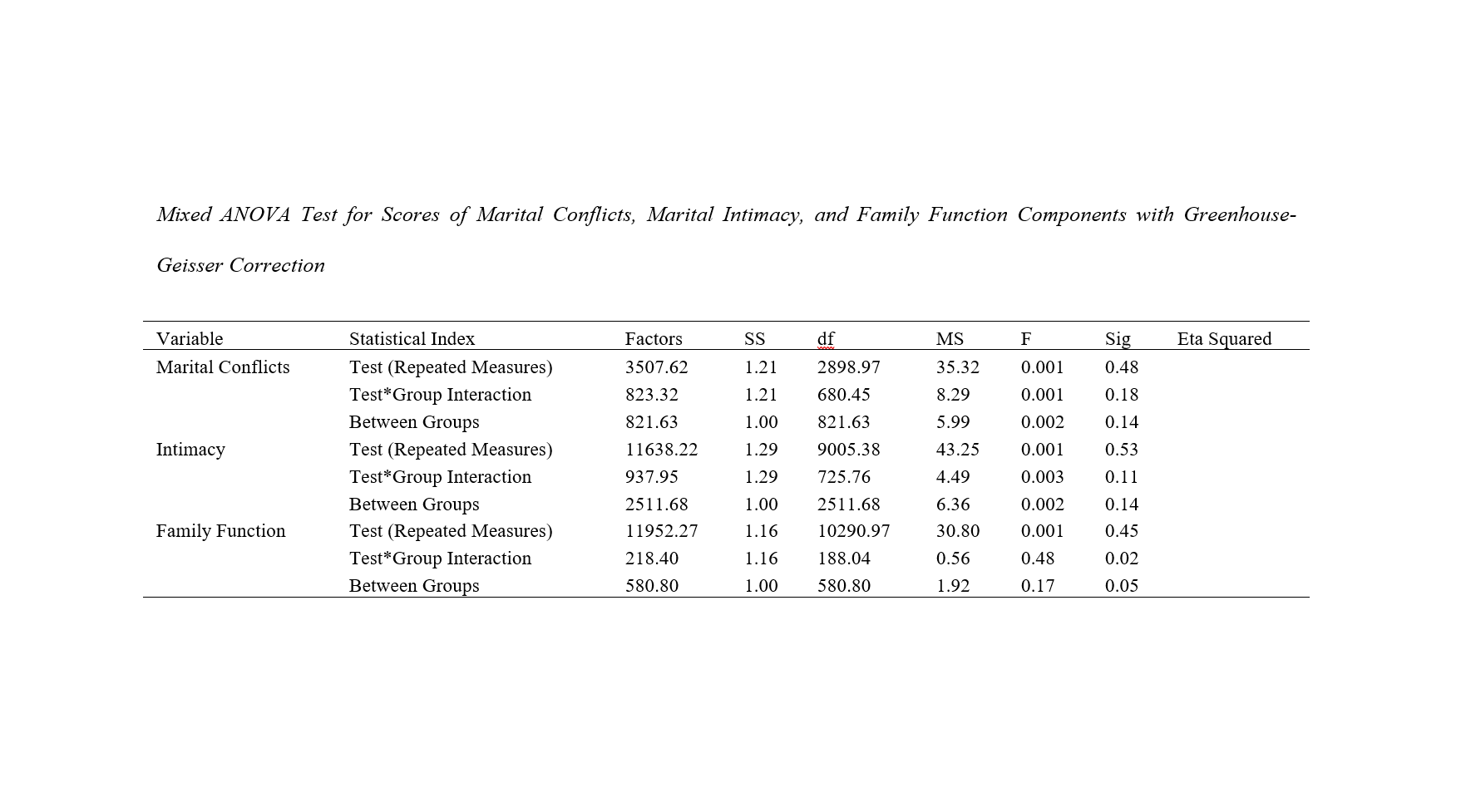Comparing the Efficacy of Bowen Family Systems Therapy and Couple Therapy Based on Integrated Behavioral Systems on Marital Intimacy and Family Functions
Abstract
Objective: The present study aimed to compare the effectiveness of Bowen family systems therapy and couple therapy based on integrated behavioral systems on marital intimacy and family functions in couples attending counseling centers in Mahshahr county.
Method: This study was a quasi-experimental design with a pre-test and post-test control group. The population of this study consisted of all couples who referred to counseling centers in Mahshahr city due to marital problems. Out of the population, 30 couples were selected through convenience sampling and were randomly assigned to three groups. The instruments used in this study were Bowen family systems therapy, couple therapy based on integrated behavioral systems, the Marital Intimacy Questionnaire (2006), and the Epstein, Baldwin, and Bishop (1983) Family Functioning Questionnaire. Data processing was conducted using descriptive and inferential statistics (covariance analysis).
Findings: The results showed that there was a significant difference between the three groups in the variables of marital intimacy and family function. This means that Bowen family systems therapy and couple therapy based on integrated behavioral systems have a significant effect on these variables.
Conclusion: Bowen family systems therapy and couple therapy based on integrated behavioral systems did not differ in their effectiveness on marital intimacy and family functions.
Downloads

Downloads
Additional Files
Published
Issue
Section
License
Copyright (c) 2024 Sara Bagheri (Author); Reza Pasha (Corresponding Author); Zahra Eftekhar Saadi , Fariba Hafezi , Farah Naderi (Author)

This work is licensed under a Creative Commons Attribution-NonCommercial 4.0 International License.




















